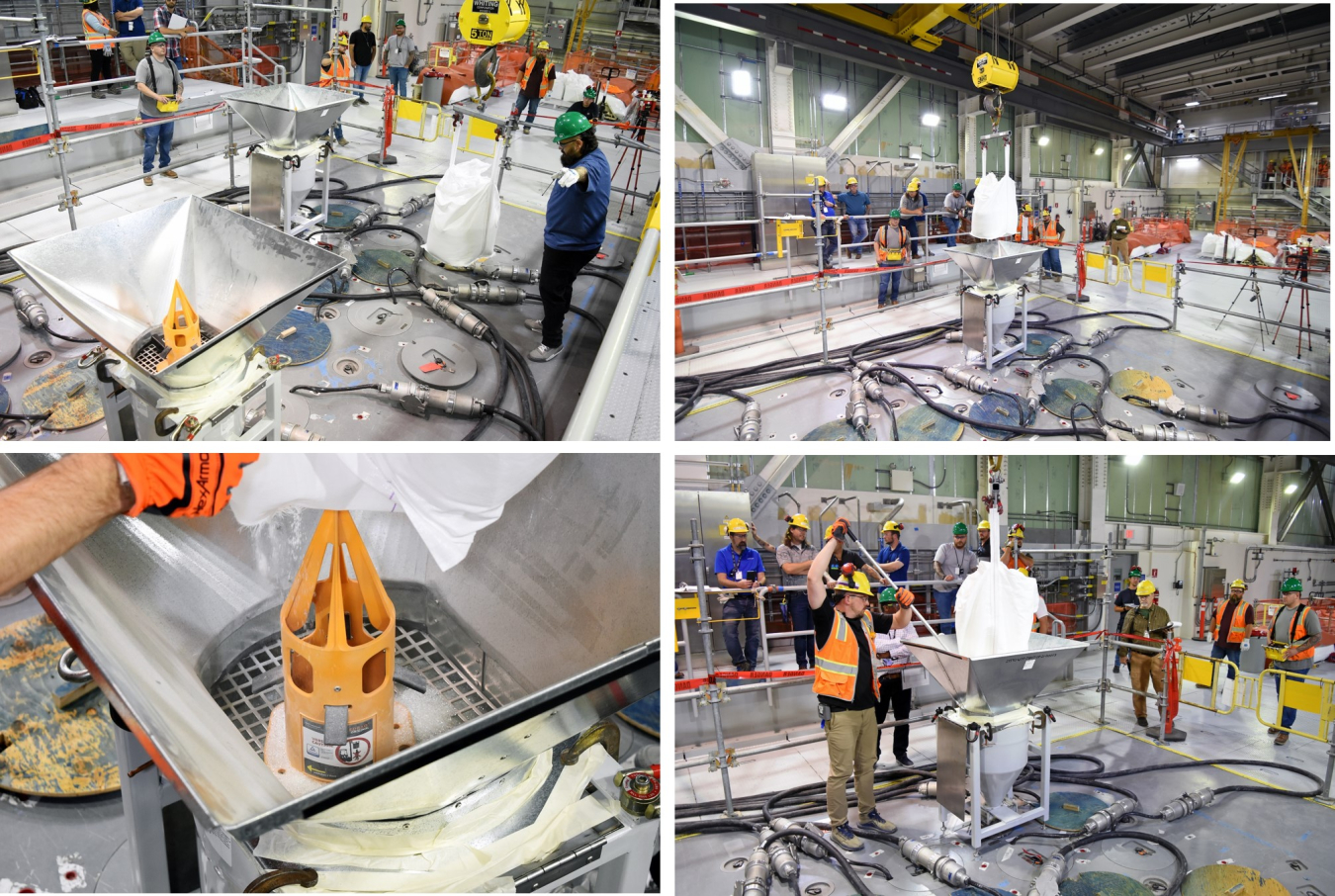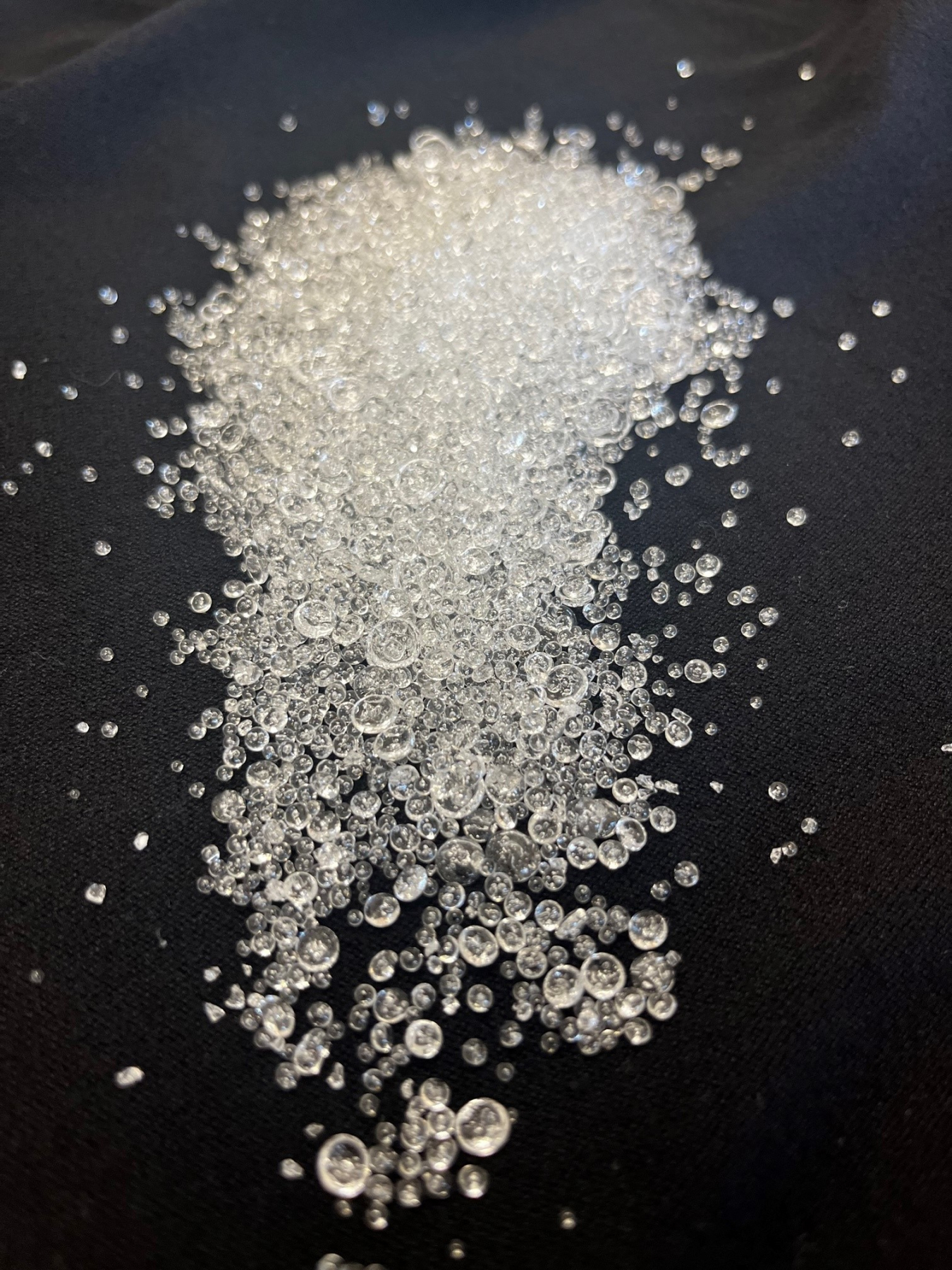The Hanford Site Waste Treatment and Immobilization Plant (WTP) team last week poured the first batches of glass forming beads, called frit, into a melter heated to 2,100 degrees Fahrenheit.
Office of Environmental Management
August 8, 2023
A Hanford Site Waste Treatment and Immobilization Plant crew added the first frit, or glass beads, to the melter inside the Low-Activity Waste Facility last week. Each bag of frit, seen here, weighs 300 pounds. The team will add frit in regular intervals until about 40,000 pounds have been added and the molten pool is about 31 inches deep. The project recently completed heating the melter to its operating temperature of 2,100 degrees Fahrenheit.
RICHLAND, Wash. – The Hanford Site Waste Treatment and Immobilization Plant (WTP) team last week poured the first batches of glass forming beads, called frit, into a melter heated to 2,100 degrees Fahrenheit. At that temperature, the beads melted and created the first molten pool inside the melter, which during future hot operations will immobilize radioactive and chemical tank waste in a form safe for permanent disposal.
The accomplishment represents another positive step toward waste treatment operations at the WTP’s Low-Activity Waste (LAW) Facility as part of EM’s Direct-Feed Low-Activity Waste Program at Hanford.
“This is a proud time for our Hanford team as we have established a molten glass pool in our first melter,” said Hanford Site Manager Brian Vance. “It’s a tremendous success made possible through the entire team’s dedication to safely progressing our important cleanup mission.”

Two 300-ton melters inside the LAW Facility at the WTP are the heart of the vitrification process, which will immobilize the tank waste in glass. During vitrification, treated waste will be fed to the LAW Facility’s melters. The waste will be mixed with glass forming materials in a melter heated to 2,100 degrees Fahrenheit and poured into specially designed stainless-steel containers. The containers will then be moved a short distance to the Integrated Disposal Facility at the Hanford Site for disposal.
“Our team is excited about furthering our progress in achieving continuous melter operations,” said Brian Hartman, the WTP project director and senior vice president for Bechtel, which is designing, building and commissioning the plant for the EM Office of River Protection.
On June 24, the team initiated heatup of the first melter and over a multiweek process slowly ramped to the 2,100 degrees operating temperature.
Vance said many DOE and One Hanford team members, past and present, contributed to the important achievement.
“This accomplishment, and the many others delivered daily across the Hanford Site, reflect the expertise and commitment to excellence shown by our talented One Hanford team of dedicated professionals,” Vance said.
A total of about 40,000 pounds of frit will be added to create a pool of molten glass about 31 inches deep.
Information on the WTP commissioning process is available on the Journey to Melter Heatup website. The plant facilities can be viewed using the self-guided Hanford Virtual Tour.
To receive the latest news and updates about the Office of Environmental Management, submit your e-mail address.

